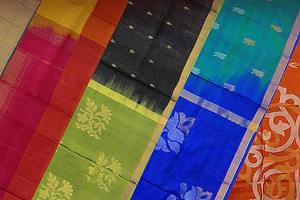- Chandigarh UT
- Creative Corner
- Dadra Nagar Haveli UT
- Daman and Diu U.T.
- Department of Administrative Reforms and Public Grievances
- Department of Biotechnology
- Department of Commerce
- Department of Consumer Affairs
- Department of Industrial Policy and Promotion (DIPP)
- Department of Posts
- Department of Science and Technology
- Department of Telecom
- Digital India
- Economic Affairs
- Ek Bharat Shreshtha Bharat
- Energy Conservation
- Expenditure Management Commission
- Food Security
- Gandhi@150
- Girl Child Education
- Government Advertisements
- Green India
- Incredible India!
- India Textiles
- Indian Railways
- Indian Space Research Organisation - ISRO
- Job Creation
- LiFE-21 Day Challenge
- Mann Ki Baat
- Manual Scavenging-Free India
- Ministry for Development of North Eastern Region
- Ministry of Agriculture and Farmers Welfare
- Ministry of Chemicals and Fertilizers
- Ministry of Civil Aviation
- Ministry of Coal
- Ministry of Corporate Affairs
- Ministry of Culture
- Ministry of Defence
- Ministry of Earth Sciences
- Ministry of Education
- Ministry of Electronics and Information Technology
- Ministry of Environment, Forest and Climate Change
- Ministry of External Affairs
- Ministry of Finance
- Ministry of Health and Family Welfare
- Ministry of Home Affairs
- Ministry of Housing and Urban Affairs
- Ministry of Information and Broadcasting
- Ministry of Jal Shakti
- Ministry of Law and Justice
- Ministry of Micro, Small and Medium Enterprises (MSME)
- Ministry of Petroleum and Natural Gas
- Ministry of Power
- Ministry of Social Justice and Empowerment
- Ministry of Statistics and Programme Implementation
- Ministry of Steel
- Ministry of Women and Child Development
- MyGov Move - Volunteer
- New Education Policy
- New India Championship
- NITI Aayog
- NRIs for India’s Growth
- Open Forum
- PM Live Events
- Revenue and GST
- Rural Development
- Saansad Adarsh Gram Yojana
- Sakriya Panchayat
- Skill Development
- Smart Cities
- Sporty India
- Swachh Bharat (Clean India)
- Tribal Development
- Watershed Management
- Youth for Nation-Building
How to promote Indian handlooms as a brand and to ensure quality products to the consumers?

Start Date :
Feb 13, 2015
Last Date :
Mar 11, 2015
00:00 AM IST (GMT +5.30 Hrs)
India has a long tradition of excellence in making handloom products with extraordinary skills and craftsmanship. 44 lakh weavers are engaged in this activity, out of which 78% are ...


Indian handlooms can be established as a brand just like "Amul" & "Dhara" cooking oil from NDDB
MAKE A ONLINE STORE AND ADVERTISE THE CONCEPT AND MATERIAL GLOBALLY... FAST DELIVERIES THROUGH OUT THE WORLD AND THE AWARENESS OF THIS STYLE TREND SHOULD BE OPEN TO THE ALL WORLD\
eVEN SPECIAL DEDICATED STORES SHOULD BE LOCATED ON DIFFERENT LOCATIONS IN MALLS AND OTHER SUPERMARKETS FOR SIMPLE ACCESS TO THE GOODS..
Celebrities have the biggest impact on the mind of the people, the simple way to promote indian handlooms ask celebrities so promote ...!
Indian handlooms should be given a unique monogram in order to be recognized as a brand and quality be ensured by forming a regulatory entity be established similar to ISI for appliances & Hallmark for bullion.Indian Handloom to be promoted by using the products in public places like in Indian Railways(bed-rolls,towels,pillows,curtains & seat covers in premium trains like Shatabdi,Rajdhani & Duranto other places of public interests.
Promote online shopping for Traditional cloths. As we look that there are most youth are using social medias. So department of handlooms should use social media to advertise the traditional cloths of diff states. By this way more people will be interacted to bye it.The important fact is more people in can buy it in affordable price via online shopping globally.
Contd. Much is said and done on 10. Brand Promotion, so I'll talk about brand sustainability, which is to ensure the handloom industry does not lose its market again. Firstly, the weaver youth should be encouraged to continue in the profession, by providing opportunities to learn at the best textile Univs, visit the biggest textile companies and manage their own ventures. Secondly, fuel innovation at every stage- from cotton to fabric to clothing to market, ensuring consistent market expansion.
Contd. on 8.2: For a sustainable future in terms of quality and market, a co-operatives structure should be used for the handloom sector. It can be made a women-managed co-operative. Apart from their superior skills in quality control and fashion, this will uplift their status in the community. On 8.5, a co-operative will much better at ensuring uniform packaging. An idea is to professionally film the production of each handloom product from start to end and provide free DVDs with each product.
Some specific comments on the concept paper: On 8.3 IMHO, asking poor and often illiterate weavers to "apply in the prescribed application format" and pay Rs1000 "which is non-refundable" is completely irrational. Ideally, they should only have to sms/call to have the officials/experts at their workshop. A second purpose this will serve is to enable quality assessment which is tied to 8.2. On 8.2, a tiered system can help where products are ranked (e.g. gold, silver, etc) as per their quality.
Indian handlooms can get promoted as a brand only when indian women wear more sarees. Indian women are beautiful in the world if they go with their culture but our culture is vanishing day by day with the advent of western culture.
Every Local self government should provide a rent free show room with parking facility at prominent location with road frontage to weaver's co-op societies in their jurisdiction as well as adjacent panchayaths. Make available the subsidy amounts to primary societies in time. State societies should pay the money to primary societies punctually. Then only primary weavers' societies can survive.Handloom weaving should form part of work experience as was done in schools earlier.